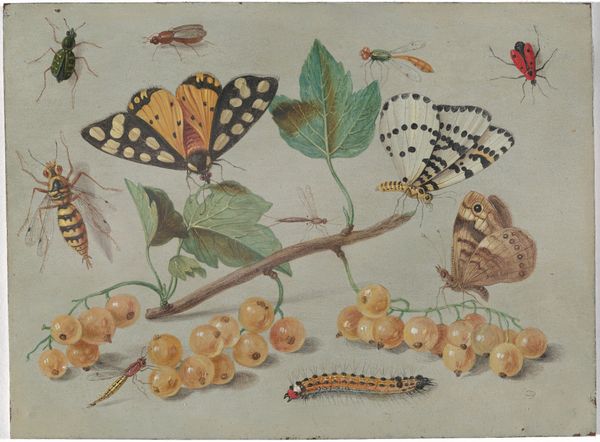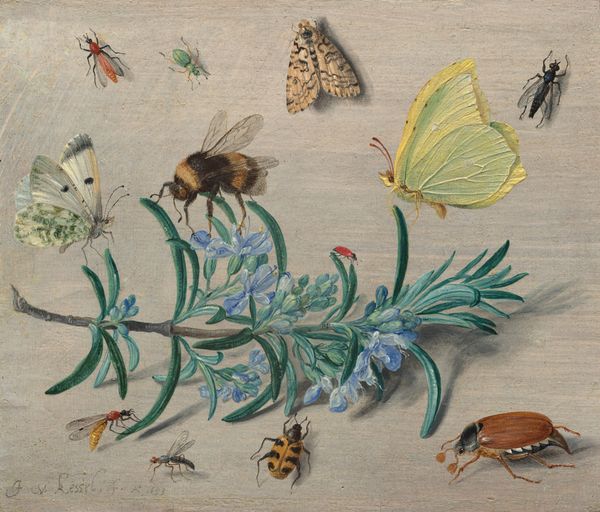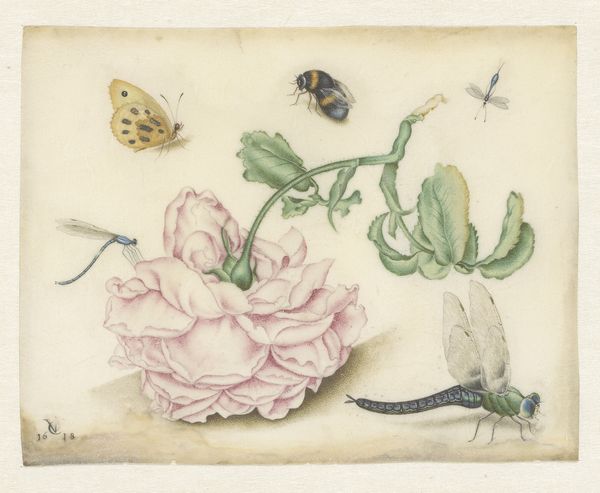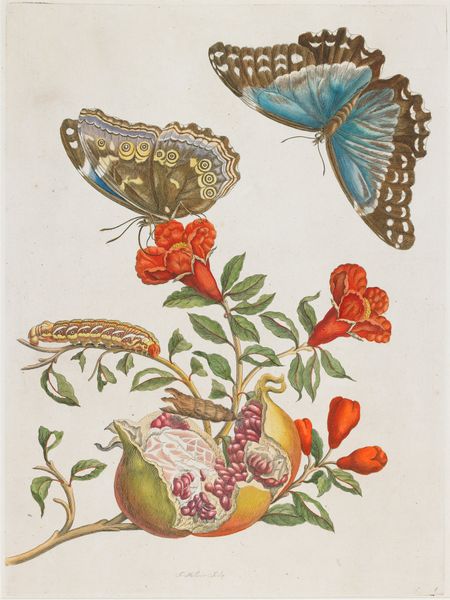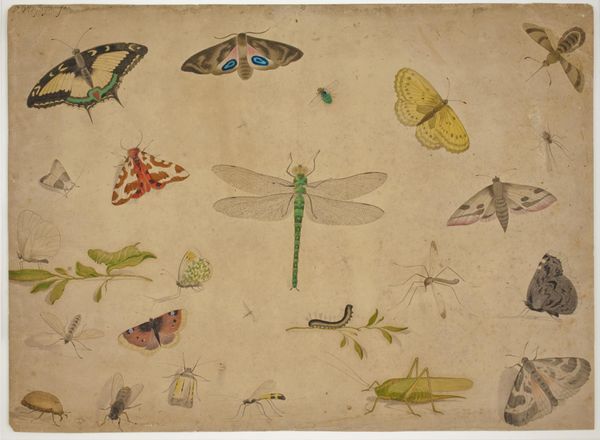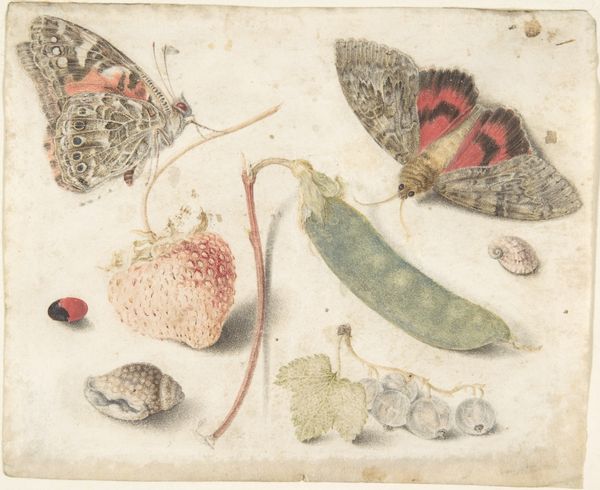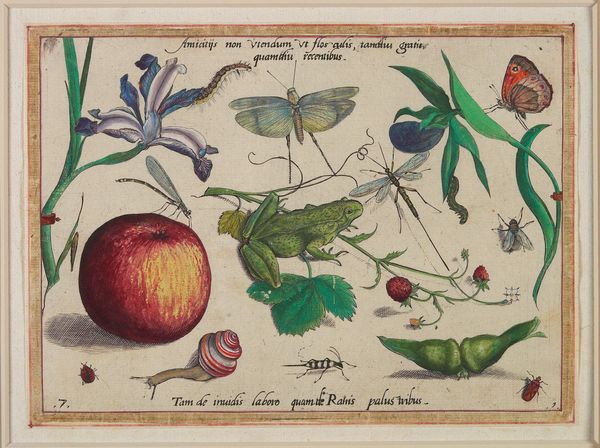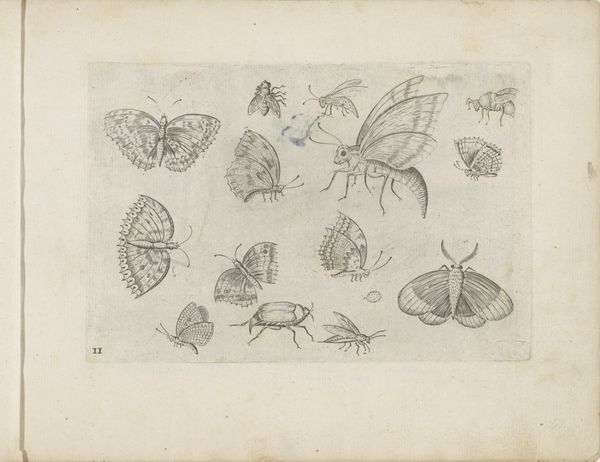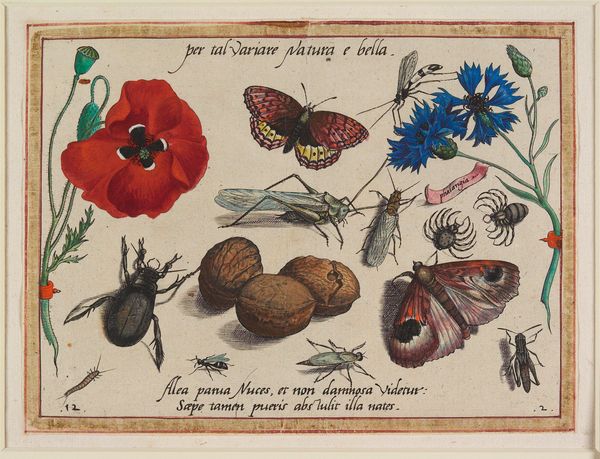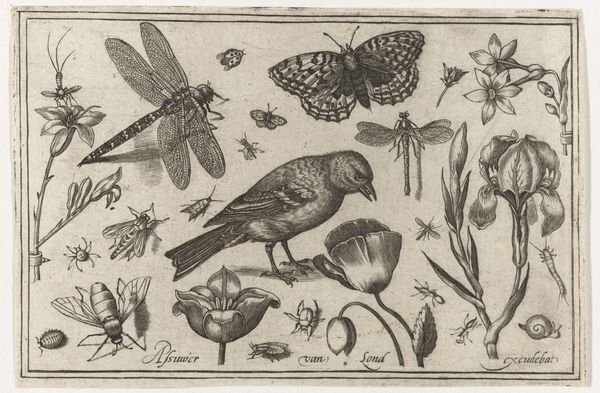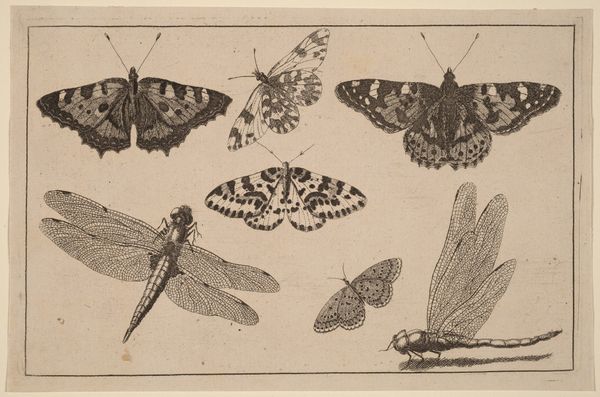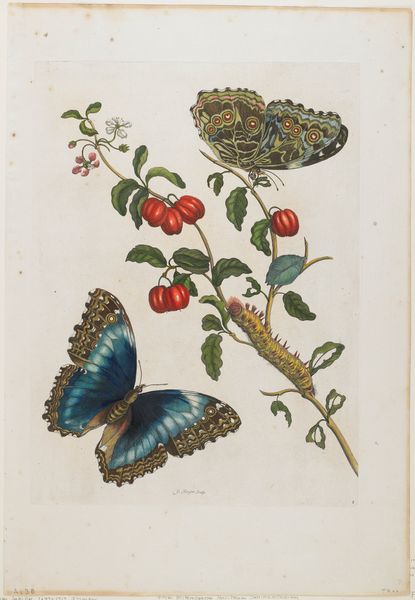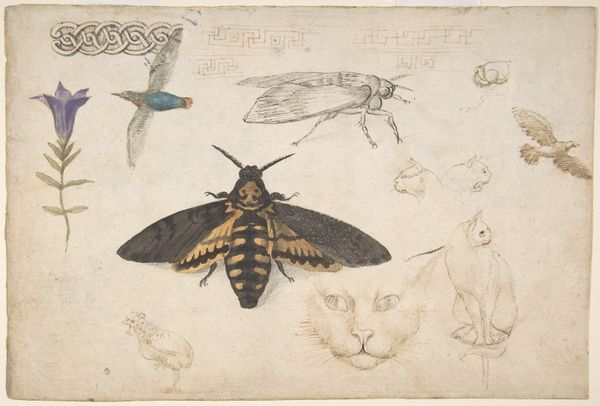
painting, oil-paint
#
baroque
#
dutch-golden-age
#
painting
#
oil-paint
#
oil painting
#
coloured pencil
#
mixed media
#
watercolor
Dimensions: support height 10.9 cm, support width 14.6 cm, outer size height 20.1 cm, outer size width 23.6 cm, outer size depth 2.5 cm
Copyright: Rijks Museum: Open Domain
Curator: Jan van Kessel's "Insects and Fruit," made between 1653 and 1661, presents us with a small world teeming with life. Currently held here at the Rijksmuseum, it’s an oil painting showcasing the artist's incredible skill in rendering the minute details of nature. Editor: Immediately striking is the meticulousness! Look at the almost obsessive detail lavished on each insect. And the delicate colors; there is such careful observation and control! Curator: Indeed! Van Kessel’s work sits within a rich history of Dutch Golden Age still life, where the rise of merchant power in global trades brought the taste for exotic goods, a market the painter tried to supply. These so-called scientific studies reflect both the wealth and global reach of the period, yet one wonders: What specific labor enabled the artist the access to these fruits, these foreign subjects? Editor: Right, you touch upon that crucial power dynamic. We need to consider how van Kessel, likely patronized by bourgeois interests, positioned these delicate objects—especially considering Europe's ravenous appetites when depicting nature. The display of white currants here feels inherently laden with societal implications, no? Curator: Precisely. Van Kessel transforms raw materials - oil pigments, brushes, a panel prepared by who knows how many hands? - into objects desired by this particular class. Did the pigment’s processing exploit vulnerable workers for extraction, shipment? These works became luxury commodities celebrating both wealth and dominion. Editor: And that contrast between fragility and inherent resilience, then. These currants seem so translucent and ripe, a subtle dance between nature’s raw processes of renewal and death! In effect, van Kessel captured moments within greater natural cycles, and made the cycle itself saleable. There's such complexity embedded into these scenes of quiet, domestic luxury. Curator: It serves to remember that materials themselves carry history, encoded. This work shows more than an idle display of beauty; rather, a careful display about value and artistic endeavor within historical and socio-political confines of his day. Editor: An intersection worth pondering! Now I find my viewpoint enhanced, as van Kessel makes what seemed at first glance simple turn very challenging.
Comments
rijksmuseum about 2 years ago
⋮
Jan van Kessel painted different kinds of beetles, flies and butterflies near a sprig of white currants with almost scientific accuracy. He relied on illustrations in scientific books on entomology as well as the actual insects themselves. This little painting reflects the sense of curiosity, discovery, wonder, as well as the urge to collect that led to the creation of many cabinets of art and curiosities in the artist’s time.
Join the conversation
Join millions of artists and users on Artera today and experience the ultimate creative platform.
